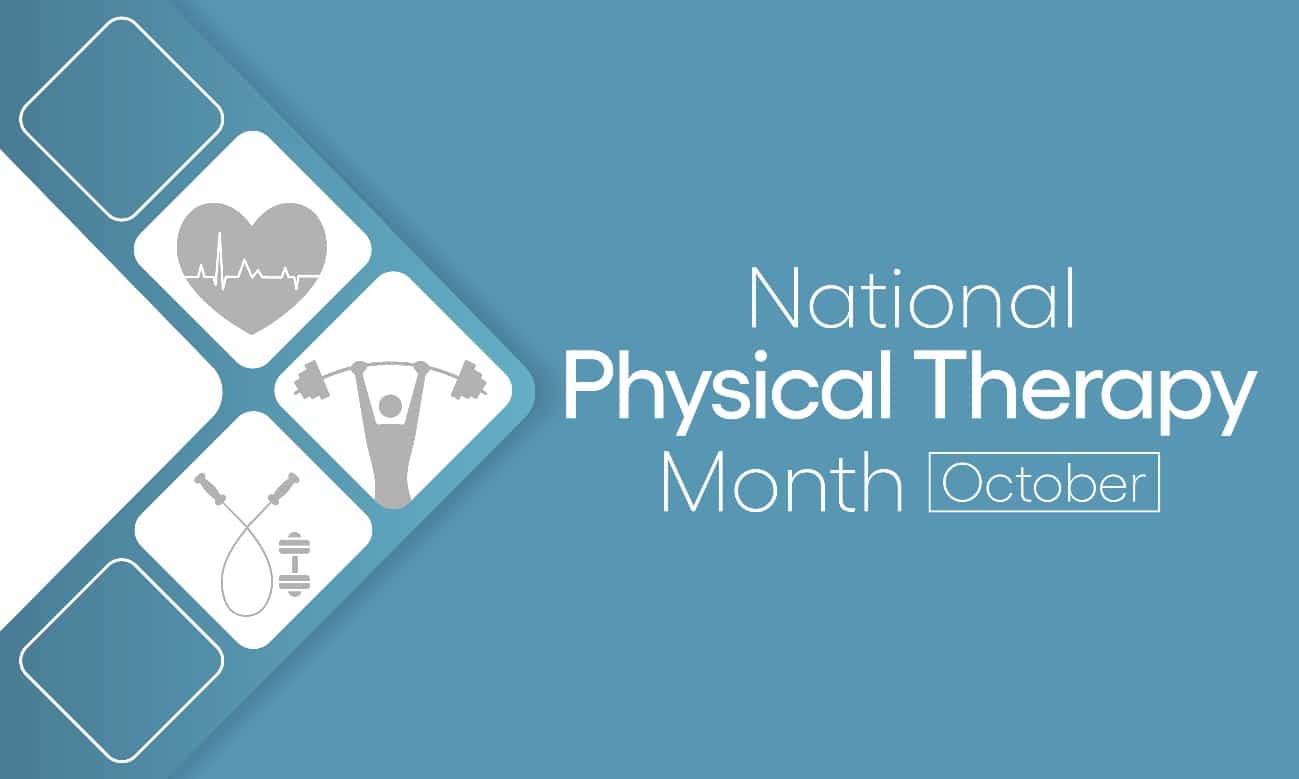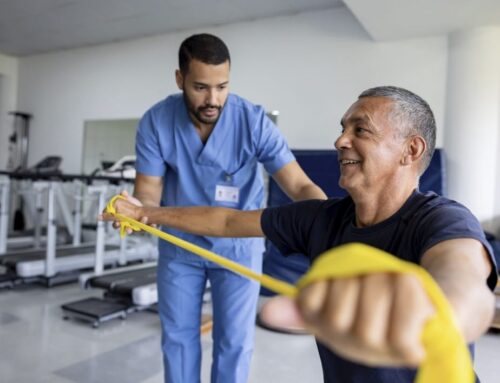Orthopedic physical therapy (PT) has been around since the early 19th century, but many people still don’t fully understand its benefits. In 1992, the American Physical Therapy Association (APTA) designated October as Physical Therapy Month to raise awareness about this treatment.
Cary Orthopaedics is celebrating National Physical Therapy Month by sharing ways PT improves patients’ lives.
What is physical therapy?
Physical therapy is a healthcare specialty that helps patients of all ages achieve pain-free movement, improve strength and range of motion, and increase their overall quality of life. Doctors often prescribe PT after an injury, illness or surgery to help people return to activities of daily living.
PT is also a cost-effective way to manage many different conditions. According to a recent report by the APTA, PT can save patients thousands of dollars in doctor appointments, medication and lost work hours.
Therapists regularly improve patients’ quality of life through education, hands-on care and prescribed exercise.
John Steigerwald became a Cary Orthopaedic PT patient following a quad muscle tear. He received PT after his surgery was performed by Dr. Miles, and it had a big impact.
“Right on schedule, I was able to increase my activity level. Within several months, I was back to all the activities I did before the accident: working out, golfing, bike rides and long walks with my dog,” said John.
The benefits of physical therapy treatment
Cary Orthopaedics’ expert team of physical therapists and assistants helps improve patients’ everyday lives. Here are a few ways PT can improve movement, relieve pain and help you thrive:
Maximize movement, strength and balance
Whether you’re rebounding from an acute injury or actively managing your mobility as you age, physical therapy can support your recovery and longevity.
Our skilled physical therapists will work with you to diagnose specific mobility issues. Once they identify the source of the problem, they will develop a customized program to help you on the road to recovery.
Mary Smith was experiencing sciatic nerve pain caused by weak muscles in her hip and thigh. Cary Ortho’s Dr. Armour suggested she try physical therapy to help.
“I did very well with my therapist,” said Mary. “I went to a recheck with Dr. Armour, and he asked me how I felt. I replied, ‘Good enough to do a triathlon!’ He said, ‘Go for it,’ and I did! It’s just so great to feel well and have energy at 70 years old!”
Be an active participant in your well-being
Physical therapy is a collaborative process. Patients have unique needs and goals, and your therapist wants to know all about yours to create the best plan for you.
Depending on your condition, your PT may guide you through therapeutic exercise and stretching; apply heat and cold packs; utilize electric stimulation; or perform dry needling, laser therapy, kinesio taping or other PT treatments. The pace will be determined based on what your goals are and what your body can achieve.
Patients usually have “homework” to do between appointments to help accelerate the recovery process. This important component will keep you growing stronger and progressing between appointments.
Rick Pate had aggressive goals to get back to his active lifestyle following a knee replacement. Cary Ortho’s physical therapy team helped him achieve them.
“I was very skeptical, especially after hearing old stories about knee replacements. Boy, was I wrong. I’m not going to say there weren’t tough times after surgery and during therapy, but it was so worth it. Marc and Craig from Cary Ortho Physical Therapy were incredible!” said Rick.
“In the end, I was able to continue officiating [basketball] seven months after surgery and played baseball the following summer. Dr. Andersen and his staff enabled me to officiate college hoops for an additional 10 years until I retired on my own instead of retiring earlier due to a knee issue.”
Avoid dependence on painkillers and opioids
Pain from an orthopedic injury can be overwhelming at times, causing patients to reach for medicinal relief. Over the past two decades, we have witnessed the significant, damaging effects of excessive opioid painkiller use and misuse. Opiates are highly addictive, and side effects can range from depression to overdose if not used properly.
Physical therapy is the healthiest form of pain management – especially for long-term recovery and sustainable wellness. Your PT plan will relieve pain and address the root cause(s) of your pain, so it does not return.
Rachael Allen was experiencing excruciating pain following a ruptured lumbar disc in her back.
“I couldn’t sit, stand or walk for really any period of time. I just laid on the couch in tears. I received injections that only worked for a short time. I ended up right back where I started – in pain,” said Rachael.
“Dr. Mathur … examined me and suggested a decompression, so I scheduled my surgery. After surgery, it was so convenient to have my entire care team in one large group. It made coordinating my PT, massage, dry needling and additional pain management so convenient. Everyone worked together to get me back to doing the things I love.”
Avoid the need for surgery
Physical therapy is often the best first step when a patient has a bone or joint injury or develops an orthopaedic condition.
Depending on the specific issue, an intensive course of PT treatment can be just as effective as undergoing surgery, saving the patient from the cost and recovery of an invasive procedure.
Find a physical therapist
Cary Orthopaedics’ physical therapy team has helped thousands of patients overcome pain, avoid surgery and regain strength. Our highly trained professionals better the lives of our patients each day with PT and other orthopaedic treatments.
We are ready to help you get back in motion! Meet our physical therapists and contact our office to request an appointment.






